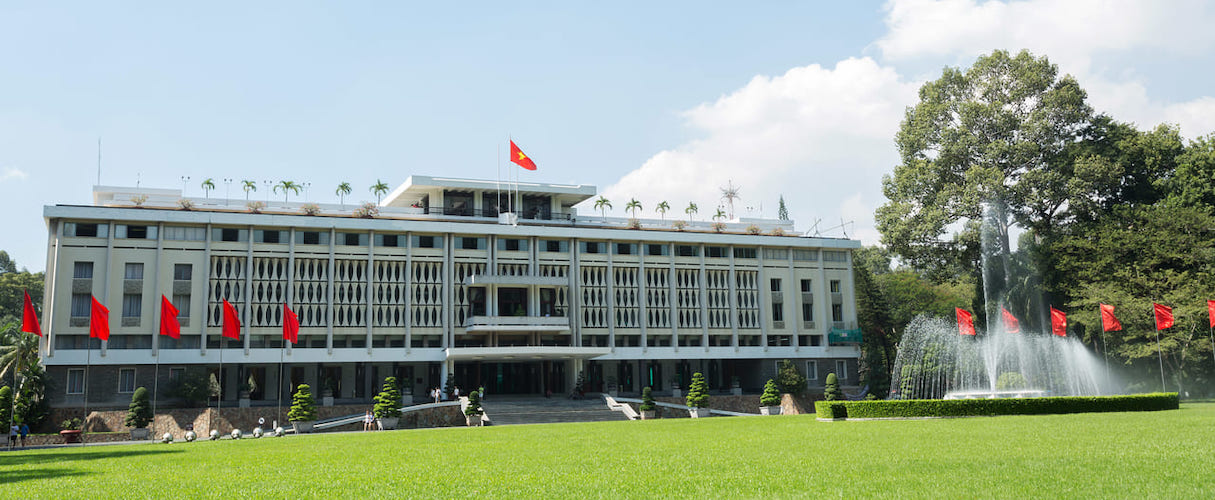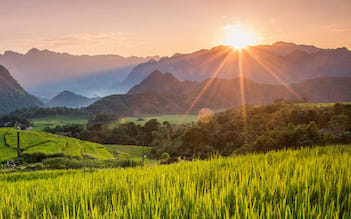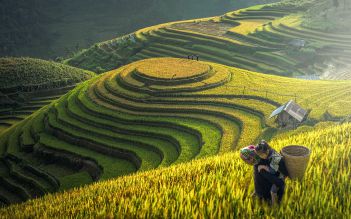Overview
Independence Palace is a symbol of victory, peace and territorial integrity of Vietnam. Thanks to its historical significance, the palace is one of the most attractive attractions in Ho Chi Minh City tours.
The architecture of the palace
The Independence Palace covers a fairly large floor area of nearly 120,000m2 (300m x 400m) in the central area of Ho Chi Minh City, surrounded by four main streets, namely Nam Ky Khoi Nghia in the Northeast, Huyen Tran Princess Street in the Southwest, Nguyen Thi Minh Khai in the Northwest, and Nguyen Du in the Southeast.
Especially, the palace is home to many ancient trees with different species from the French colonial period. It is a favourite place for tourists who love art and architecture.
The palace was built in accordance with the characteristics of architecture in Vietnamese feng shui. The water fountain in front of the road and the forest behind it are the occipital part to create a sustainable position for the project.
The mansion was designed and built to pray for prosperity and sustainability. Independence Palace has become a "must-visit" place when traveling to Saigon.

Inside the Independence Palace
Under the eyes of art, talented architects have arranged very reasonable details of interior and exterior architecture. The front yard of the palace is an oval lawn with a diameter of 102m. The green lawns create a soothing and refreshing feeling as visitors walk through the entrances.
Running along the width of the hall is a semicircular lake. Inside it is the cabinet meeting room and the banquet hall located on the ground floor.
Three main display areas of the palace
The fixed area
This area includes a ceremonial room, a dining room, a cabinet room, a national security council room; guest room of the president, office of the president, office of the Vice President of the Republic of Vietnam, the living room of the vice president, the filing room, the presidential family bedroom, the living quarters, lady's living room, cinema room, entertainment room, retreat floor, tactical advisory room, communication room, presidential battle room, kitchen, jeep, F5E aircraft, tank 390, and tank 843.
The living relics are kept until now so that future generations can see firsthand, observe and understand the part of a period of a heroic and fierce war.
The thematic area
It is a display area for such topics as "From the Paris Agreement to the Ho Chi Minh campaign through reserve documents", "Ho Chi Minh Road through Saigon government documents" or photo exhibitions such as " Vietnam - Song of victory ".
Visitors can not only look back on the vivid photos from the previous period but also learn more about the historical details hidden in it without being rewritten by any newspaper. Those are the collectables, the hard work of searching and deepening of the historical experts.
The additional areas
It is the photo gallery that was found and collected later. The photos were kept by the people from the resistance times until independence and sent to the Relic to preserve and pass on to future generations.




